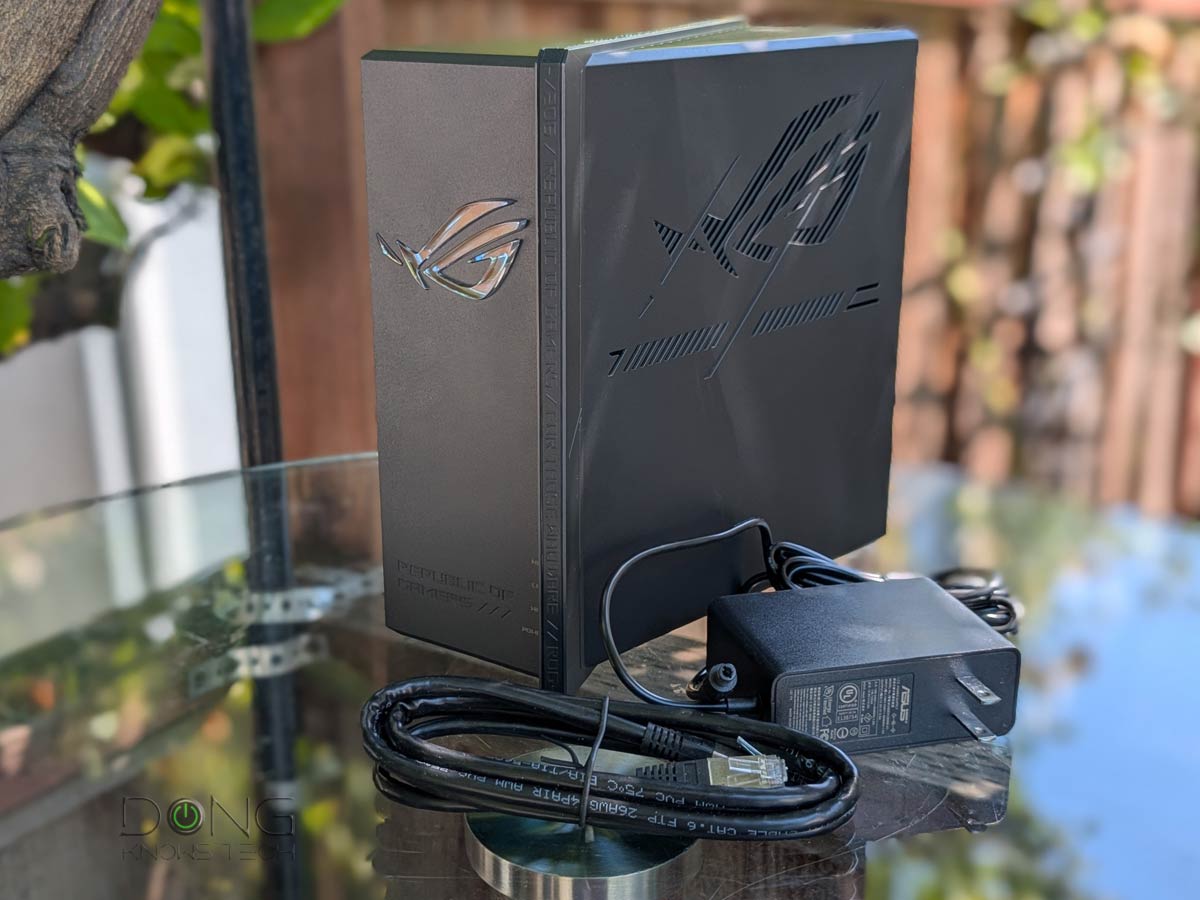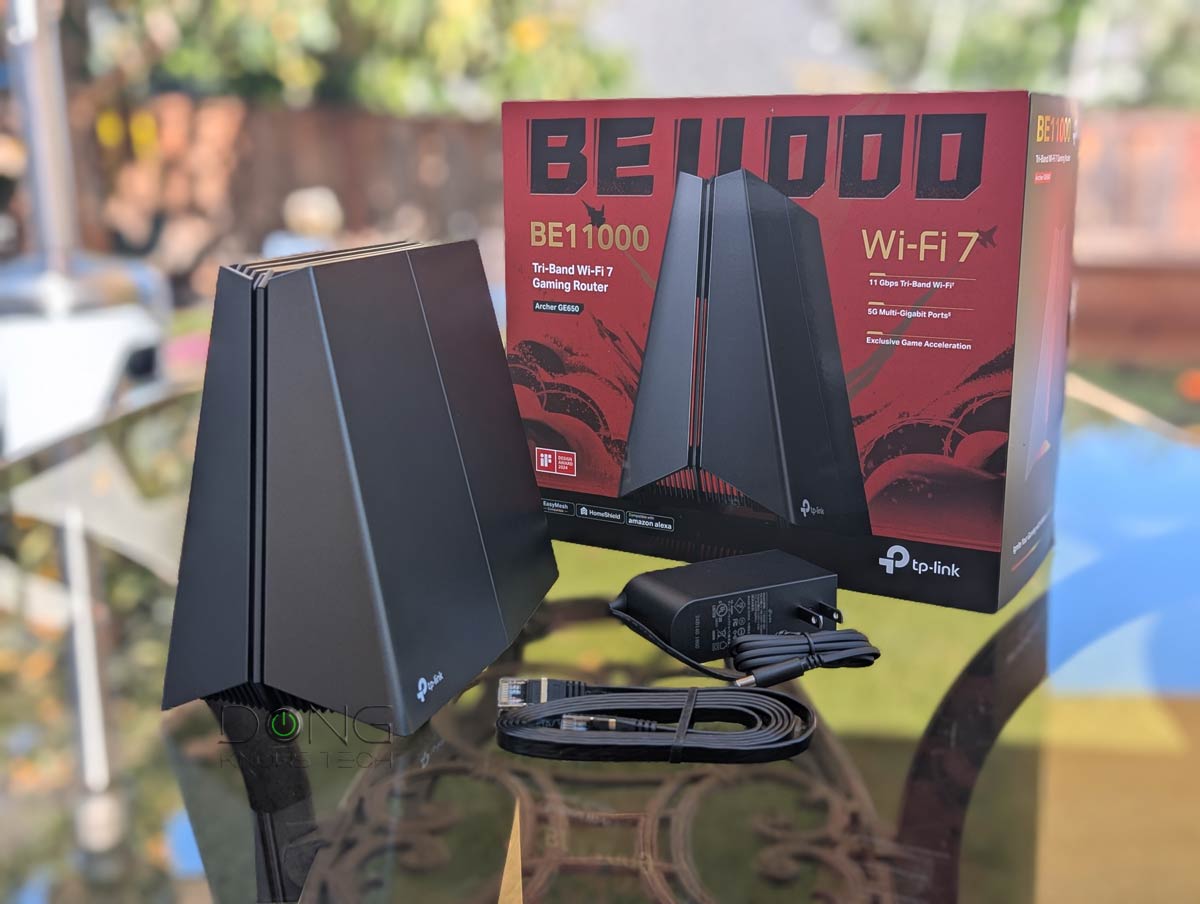You might have run into a scenario where you’ve upgraded your broadband to faster-than-gigabit speeds, namely Gig+ or multi-Gigabit Internet, yet can’t seem to “see” it on any device. Sure, your connection is faster, but not as fast as you had been prepared to be wowed.
This quick post will help. It’s the answer to the myriad of questions I’ve received on the matter over the past few months—it seems that more and more folks have surpassed the Gigabit threshold since the beginning of 2025.
You’ll find here the simple requirements to achieve those magic download numbers on your device, at or close to what your ISP provides. In more ways than one, having Gig+ or faster broadband lies exactly between hitting the Gigabit and 10Gbps Internet milestones. It’s complicated yet simple enough.

Getting Gig+ or multi-Gigabit Internet on your device: The devil is in the details
When it comes to speed testing, the most important thing is to ensure the equipment used for the tests is not the bottleneck—the test result is always that of the slowest party involved.
That said, if your broadband is slower than 100Mbps, it’s easy to gauge, as all devices are faster than that. When you reach 500Mbps, however, things start to get complicated, and Gig+ or faster can be a challenge to experience, partly because you don’t really need a connection that fast.
Tip
Gig+, or Gig Plus, denotes a speed grade between 1Gbps and 2Gbps. So, it’s 1.5Gbps, give or take a couple of hundred megabits per second, and it’s not speedy enough to qualify as Multi-Gig Ethernet or multi-Gigabit. Intel coined the term to describe its Wi-Fi 6E client chips, the AX210 and AX211, in terms of their real-world speeds.
Gig+ primarily applies to sustained Wi-Fi 6 or Wi-Fi 7 speeds via a 2×2 at 160MHz connection, or to broadband internet speeds.
Among other things, mobile devices, such as smartphones, often require much less bandwidth to function optimally and are often optimized for extended battery life. That’s not to mention most Wi-Fi 5 and low-end Wi-Fi 6 clients can’t achieve real-world sustained rates of more than 500Mbps in most cases anyway.
The point is that to “see” faster-than-gigabit speeds on a device, all equipment in your network must be up to snuff. First and foremost, it’s your router.
Experiencing Gig+ or multi-Gigabit Internet: Picking the right router
On the speed front, the first thing to note is that the router’s WAN port determines the maximum broadband it can handle. So, you must use a router with a WAN port that’s clearly faster than your broadband plan.
Specifically:
- On the WAN side: The router’s WAN port connects to your Internet terminal device. If you have a 2Gbps or slower broadband, use a router with a 2.5Gbps or faster WAN port. If you have 2.5 Gbps or faster broadband, a 5 Gbps or 10 Gbps WAN is a must.
- On the LAN side: A LAN port connects one wired device to the network, including a switch. (If you use a switch, it must be a Multi-Gig switch.) The same rule applies: the LAN port(s) must clearly be faster than the broadband plan you want to test.
The point here is that it’s important to get a router with multiple Multi-Gig ports, as you need a Multi-Gig wired connection to experience Gigabit or multi-Gigabit Internet on a wired device. Since sub-2.5Gbps broadband is common, in most cases, one of the entry-level multi-Gigabit routers in the best list below will work. However, it doesn’t hurt to get a 10Gbps router.
Top 5 best 2.5Gbps Multi-Gig routers
 |  |  |  |  | |
| Name | Ubiquiti UniFi Cloud Gateway Max’s Rating | Ubiquiti UniFi Dream Router 7’s Rating | ASUS RT-BE92U’s Rating | ASUS ROG Strix GS-BE18000’s Rating | TP-Link Archer GE650’s Rating |
| Price | – | – | – | – | – |
| Rating | |||||
| Description | |||||
| Statistics | |||||
| Buy this product |
The second thing is that the router’s Wi-Fi must be able to handle Gig+ or multi-Gigabit sustained rates, so it must have Wi-Fi 6 or Wi-Fi 7 with 160MHz or wider channel width.
Additionally, if you use a Wi-Fi system, it’s best to use it with multi-Gigabit wired backhauling. While Wi-Fi 7’s MLO feature helps with wireless backhauling, linking the Wi-Fi broadcaster wirelessly is always temperamental, and the performance at the satellite unit may suffer. That said, if you have to use a system in a wireless setup, it’s best to use the router unit during speed testing.
Tip
Technically, all Wi-Fi devices are transceivers, as they can both transmit and receive wireless signals. However, in the context of a local network, you can think of a Wi-Fi access point (or a router) as the “broadcaster”, as it’s subject to regulatory “broadcasting power” and can host multiple “receivers”, also known as Wi-Fi clients or devices, simultaneously. The term is only to demonstrate their roles, and not to omit the fact that networking is two-way communication.
Experiencing Gig+ or multi-Gigabit Internet: Pick the right client
To experience Gig+ or multi-Gigabit Internet, you will need to use a device that can handle this speed as well.
If you use a wired device, such as a computer, make sure it has a multi-Gigabit port. After that, connect it to the router’s multi-Gig LAN port. If you use a short cable, CAT5e will suffice. However, if you need to use a long cable, consider using CAT6a or a higher-grade cable.
Most new desktop computers come with at least one 2.5GbE port, and you can always upgrade one to multi-Gigabit via a Thunderbolt or USB-C adapter. If you use a USB adapter, it’s best to use it with a USB Gen 2 (10Gbps) or faster port, as USB has significant overhead.
If you use a Wi-Fi client to test the broadband connection, keep in mind that Wi-Fi 6 and 6E top out at Gig+. To see 2Gbps or faster, you need a Wi-Fi 7 device. The table below shows the correlation between broadband speeds and their Wi-Fi requirements.
| Broadband Speed | Minimum Port Speed Grade (WAN and LAN ports on the router and switches) | Minimum Wi-Fi Standard to Consider for a Single Broadcaster (Router / Access Point) | Minimum Wi-Fi Standard to Consider for a Mesh System |
| 50Mbps or slower | Fast Ethernet (100Mbps) | Any Wi-Fi Standard | Any Wi-Fi Standard |
| Up to 150Mbps | Gigabit | Wi-Fi 4 | Wi-Fi 4 (via wired access points) |
| Up to 250Mbps | Gigabit | Wi-Fi 4 (top-tier) Wi-Fi 5 | Wi-Fi 5 |
| Up to 500Mbps | Gigabit | Wi-Fi 5 | Wi-Fi 5 (wired backhauling) Wi-Fi 6 |
| Up to Gigabit | 2.5Gbps Multi-Gig | Wi-Fi 6 or 6E | Wi-Fi 6/ 6E (top-tier, preferably via wired backhauling) |
| Up to Gig+ | 2.5Gbps Multi-Gig | Wi-Fi 6 or 6E (top-tier) | Wi-Fi 6/6E (top-tier with Multi-Gig wired backhauling) or Wi-Fi 7 with MLO backhaul |
| 2Gbps or Faster | 5Gbps Multi-Gig, 10Gbps Multi-Gig, SFP+ | Wi-Fi 7 | Wi-Fi 7 (preferably via 2.5Gbps or faster wired backhauling) |
And that’s it. Now, when you perform a speed test, chances are you’ll be able to experience your Gig+ or multi-Gigabit Internet in full if the device you use for the testing is the only one that’s active within your network.

The takeaway
Your broadband and your local network are two different things. When you upgrade one, it’s essential to ensure that the other is also improved equally, so that the two work together to deliver the best experience.
Speaking of which, as mentioned, in most cases, you only need a modest amount of bandwidth for the application at hand. That said, having super-fast Internet only means that you can use more devices simultaneously without worrying about them slowing each other down. Speed testing may bring in some satisfaction, but it’s not part of day-to-day Internet usage.



Hi Dong.
Thank you for spending the time to write authentic and high quality reviews. There is a lot of information out there and yours seems to be comprehensive; its clear you have a passion for this. That said, I like the multi-gigabit explained article, but am still having trouble picking hardware for my home; despite reading deco, and many access point reviews. Can you provide some guidance?
For me the Deco’s were not reliable. I dropped teams calls often with the wired back-haul.
I tried the Zyxel NWE130BE (2 of them) and found them to be slow, I couldn’t come close to your numbers in any setup.
I have a gig network connection (1200mbs or so) and 2.5 gig network in the house. its 2500 sq ft, and i need to cover asymetrically out to the garage. I was thinking 2 wired points and maybe a wireless mesh point through the kitchen wall to the garage to get the outside cameras covered. The house is a box shape and i had originally with next wifi had a point in the center of the house down-stairs and slightly offset from center upstairs (and then the kitchen one wireless).
I want to get all of that fast goodness with wifi 7 but keep the legacy 2.4 ghz iot things still working.
From your reviews, it sounded like Ubiquity had some issues there. Maybe i need the next Zyxel up? Deco be63 is cheap now, deco be75 failed. Other ideas?
Speed testing is tricky, Eric. Here’s the review of the Zyxel NWA130BE, you’ll note its test scores, which are those of Wi-Fi. As for your broadband, you need to make sure you actually get that at the entry first. The point is you need to pay attention to the details, including those mentioning in this post. Don’t just skimp and make assumptions and then blame the hardware, etc.
What would you choose U6 Enterprise or UniFi U7 Pro XG, thank you for the help provided through your opinion 🙏
I’d go with the latter, Adrian.